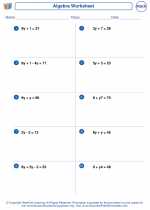Operations in Math
In mathematics, operations are the basic calculations that we use to solve problems and work with numbers. The four basic operations are addition, subtraction, multiplication, and division.
Addition
Addition is the process of combining two or more numbers to find their total. The symbol for addition is "+". For example, 3 + 4 = 7.
Subtraction
Subtraction is the process of taking one number away from another. The symbol for subtraction is "−". For example, 7 - 3 = 4.
Multiplication
Multiplication is the process of adding a number to itself a certain number of times. The symbol for multiplication is "×" or "*". For example, 3 × 4 = 12.
Division
Division is the process of dividing a number into equal parts. The symbol for division is "÷" or "/". For example, 12 ÷ 4 = 3.
Study Guide
Addition
Example: What is the sum of 5 and 8?
Answer: The sum of 5 and 8 is 13.
Subtraction
Example: What is the difference between 10 and 6?
Answer: The difference between 10 and 6 is 4.
Multiplication
Example: What is the product of 7 and 9?
Answer: The product of 7 and 9 is 63.
Division
Example: What is the result of dividing 20 by 5?
Answer: The result of dividing 20 by 5 is 4.
.◂Math Worksheets and Study Guides Sixth Grade. Algebraic Equations

 Worksheet/Answer key
Worksheet/Answer key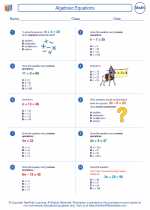
 Worksheet/Answer key
Worksheet/Answer key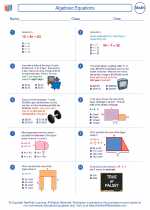
 Worksheet/Answer key
Worksheet/Answer key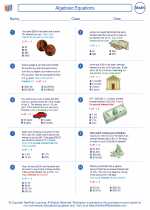
 Worksheet/Answer key
Worksheet/Answer key
 Worksheet/Answer key
Worksheet/Answer key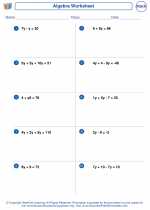
 Worksheet/Answer key
Worksheet/Answer key